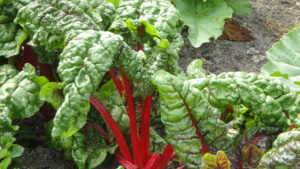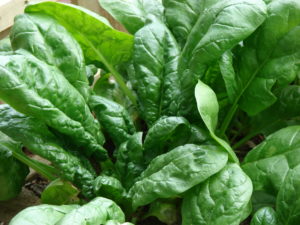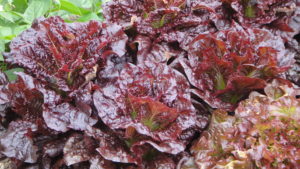Leafy vegetables are more nutritious and have fewer calories than most other vegetables, and they’re easy to grow. Most greens can be grown in relatively short, cool growing seasons, making them available for fresh harvest earlier than most other crops. If properly planned, fresh, leafy greens can be harvested all season long.
Leafy vegetables adapted to cool Indiana spring and fall growing conditions include lettuce, spinach, mustard, collards, endive, and kale. Many new cultivars of these cool-season crops have improved heat tolerance, making them productive into early summer. Root crops such as beets and turnips may also be harvested for their young, tender foliage. Greens that produce in the heat of summer include New Zealand spinach and Swiss chard.
Leafy greens grow best in open, level areas where the soil is loose, rich, and well-drained. Although leafy crops tolerate shade better than plants grown for their fruits or roots, at least six hours of sunshine daily will help ensure a high-quality harvest. Avoid planting leafy greens in heavy clay or sandy soils. The soil pH should be between 5.8 and 6.8.
Most leafy vegetables can be planted as early in spring as the soil can be worked. The soil is ready for tilling and planting if a handful of soil crumbles when you squeeze it. If the soil forms a muddy ball when you squeeze it, the soil is still too wet and will form hard, long-lasting clods if you work it.
Seed may be directly sown in the garden for many leafy greens and must be planted at the proper depth to ensure good germination. The seed packet should include information on planting depth and spacing. Crops such as lettuce, spinach, chard kale, and collards may be transplanted to get an early start.
Home gardeners can choose that approach or decide to harvest only a few leaves as they are needed, allowing for a longer harvest season from a single planting. If you harvest leaves as needed, harvest the outer, more mature leaves first, leaving the young, inner leaves to continue growing. However, collards are an exception: harvest the center rosette of collard leaves.
As the days grow longer and warmer, cool-season greens tend to bolt (flower) and become tough or bitter. At this point, it is best to pull the plants and replace with a warm-season crop.
Additional information on growing leafy greens can be found at https://ag.purdue.edu/hla/pubs/HO/HO-29.pdf.


